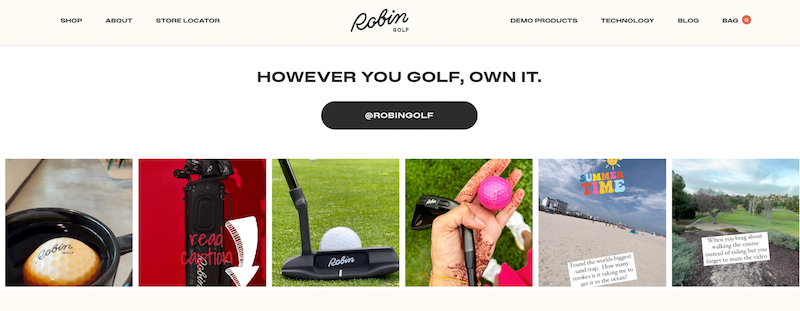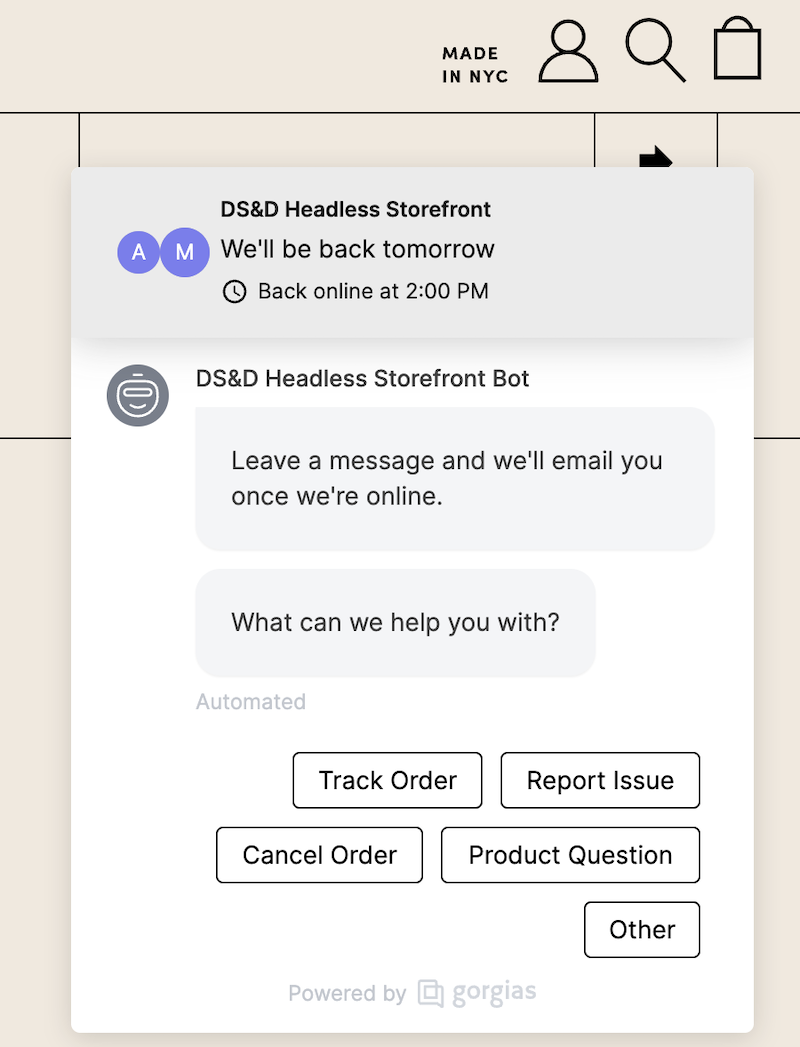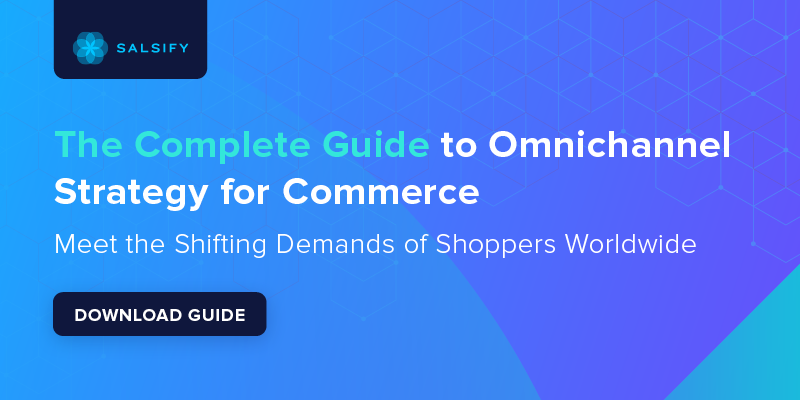
Competition is healthy, but you have to know what your competitors are doing in order to compete. In ecommerce, the stakes are constantly changing. New brands and retailers crop up every day, and according to Shopify, one in every five retail sales will be made online by the end of 2023.
Regularly conducting an ecommerce competitive analysis will help you keep a pulse on the competitive landscape and ensure you stay ahead of the competition.
What Is a Competitive Analysis in Ecommerce?
An ecommerce competitive analysis is a series of activities that help you understand what your competitors are doing online. It explores how they present their brand and products, how they advertise to their customers, and how they differ from other brands in the same sector.
The aim is to find where you fit in the existing landscape and identify opportunities to stand out and maintain a competitive edge.
Identify Market Trends
A competitive analysis will help you gain valuable insights into what’s happening in the market and better grasp emerging consumer preferences.
Find Your Positioning
You’ll better understand where your brand and products fit into the market and what makes you different.
Understand Your Competition
You’ll learn who your biggest competitors are, what products they sell, and the strategies they use to succeed.
Uncover New Opportunities
A competitive analysis will identify gaps in the market and allow you to understand better where your competitors are falling short.
Improve Marketing
You’ll discover new ways to market your brand and products and glean inspiration from your most successful competitors.
How To Conduct a Competitive Analysis
Competitive analysis can provide insight into several important categories, including marketing, customer personas, and overall customer experience. Follow these steps to maximize the amount of information you collect.
1. Identify Your Competition
First things first, you need to know who you’re analyzing. You probably have an idea about who your top competitors are, but dig deeper — sometimes, the hottest competition is the most unexpected.
Make sure you include a range of brands, including the following three competitor categories.
Direct Competitors
Your direct competitors are brands that sell similar products to a similar customer base.
Indirect Competitors
Indirect competitors are brands that sell similar products to a different audience or brands that sell different products to the same audience.
Tertiary Competitors
Tertiary competitors are brands that sell products that are somewhat related to yours but not wholly — like a sportswear company if you sell running shoes.
Create a Detailed List of Competitors
The easiest way to find your biggest competitors is to run a Google search, but this will only reveal brands with a good search engine optimization (SEO) strategy and rank high in the search engine results pages (SERPs).
So, combine this top-level research with a more detailed look through social media, ad libraries, and Amazon, which you can use as a database of businesses that sell the same products as you.
As you’re creating a list of competitors, consider important factors like:
- Product offerings
- Target market
- Geographic reach
- Market share
For example, a brand selling locally in Chicago isn’t going to be a major competitor if you’re a global brand operating from Europe.
They’re going to have different marketing strategies, different geographic reach, and different target markets, but you can still get some useful insights from exploring their marketing, pricing, and product catalog.
2. Evaluate Competitor Websites
When you’ve compiled a list of top competitors, start browsing their websites. This will give you an idea of their brand positioning, the messaging they use, and how they present their products.
Take a closer look at these core areas.
Website Design
What colors and graphics do they use? Is the website sleek and modern, or is it quirky and characterful?
User Experience
How easy is it to find what you’re looking for? What does the page hierarchy look like, and how are products categorized?
Product Assortment
What kind of products do they sell? Are there any hints about what sells best?
Product Presentation
What do the product pages look like? Do they have detailed product descriptions and rich multimedia content, or are they basic bullet points?
Pricing
How much do they sell their products for? Do they run any sales or discounts? Manually get pricing information from competitor websites, use a web scraper, or use a purpose-built price comparison tool to get started.
Checkout
What does the checkout process look like? Is it easy to navigate or does it involve a multi-step process with numerous form fields?

Image Source: Rains
3. Examine Competitor Marketing and Advertising
Next, look at how your competitors promote their products. This will give you an insight into the platforms, messaging, and ad formats they use to sell products. It can be tricky to determine what methods actually work without going behind the scenes, but this step can provide you with some inspiration for your own marketing efforts.
Here are some tactics to watch for as you examine competitor marketing and advertising.
Digital Marketing Campaigns
Sign up for competitor email lists to see what email marketing tactics they employ, poke around on their YouTube channel to see if they’re active, and check out any sales promotions or seasonal events they run.
Social Media Presence
Use a social media monitoring tool to track mentions of competitors to give you an idea of their reach and influence online. Also, check out how they use their socials, what kind of content they post on each platform, and how much engagement they generate.
You can also look at their website to see how well they integrate their online store with their social channels — do they have share buttons on blog posts? Do they use social media widgets? Do they have an Instagram feed on their homepage?

Image Source: Robin Golf
Content Marketing
Take a look at the kind of content each competitor publishes on their blog. Take it one step further too, and look for any downloads, ebooks, whitepapers, and other content formats they have available. Do they post regularly? What kind of content do they post? How much engagement does each piece get?

Image Source: Hilma
Search Engine Optimization
Use a tool like Google Ads Keyword Planner to see how many people search for your competitors on Google. You can also find out what search terms they’re ranking for, which can provide insight into their SEO strategy.
Paid Advertising Channels
Do your competitors run ads? You can search their brand name on Meta’s ad library to see what ads they’ve promoted and how regularly they invest in campaigns. Also, take note if they run paid campaigns on the search engines too. Search a few relevant keywords and see if they come up.
4. Consider Customer Experience
Finding out what customers think about your competitors and their products can be a great way to identify gaps in the market or an opportunity. You can take a look at customer reviews on sites like Yelp, Google, and Amazon, or see if they have dedicated reviews on each product page.
This is also a good opportunity to dig into their overall customer journey. You can sign up for their email list to see how it works in action, like whether they send personalized product recommendations or promote a loyalty program.
Make a note of the customer support options too. Do they have decent post-purchase support? How can you contact the support team? How quickly do they respond to queries?

Image Source: DS & Durga
5. Think About Technology and Innovation
Finally, think about how your competitors are using technology throughout the sales cycle. For example, do they use any distribution and logistics tools? What ecommerce solutions are they using?
Keep an eye out for what, how, and where your competitors are implementing technology, including:
- Payment solutions
- Inventory software
- Customer review tools
- Post-purchase tools
- Email marketing software
- Accounting software
- Analytics
- Chatbots
- Shipping solutions
- Loyalty programs
- Product experience management (PXM) tools
Understanding how your competitors build and use their tech stack will show you what parts of the sales cycle are the most important and give you inspiration for your own.
6. Finish With a SWOT Analysis
Once you’ve got a list of competitors and have gone through the ecommerce competitive analysis process, you can create a strengths, weaknesses, opportunities, and threats (SWOT) analysis to compare all the information you’ve collected.
A SWOT analysis highlights each competitor's strengths, weaknesses, opportunities, and threats.
Competitor Strengths
What are they good at? What are they known for?
Competitor Weaknesses
Where do they fall short? What do customers complain about the most?
Opportunities for Growth
How can you take advantage of competitor gaps or weaknesses to create your own opportunities?
Identify Threats to Your Business
How does each competitor pose a threat to your business?
Carve Out Your Competitive Edge With an Ecommerce Competitive Analysis
When you understand the competitive landscape, you’re less at risk of throwing spaghetti at the wall just to see what sticks. Instead, you can take inspiration from brands that are doing well and identify opportunities.
Start by pinpointing exactly who your top competitors are (don’t forget to think outside the box) and then dive into their marketing strategies, reviews, website design, and customer journey to find your own positioning.

The Complete Guide to Omnichannel Strategy for Commerce
Download our omnichannel commerce guide to learn how to effectively meet new shopper demands for seamless experiences across the digital shelf.
DOWNLOAD GUIDEWritten by: Lizzie Davey
Lizzie Davey (she/her) is a freelance writer and content strategist for ecommerce software brands. Her specialty is combining customer research with actionable copy to create pieces that people actually want to read. Over the past 10 years, she's worked with top industry brands to bring their vision to life and build...
Recent Posts
8 Quick Tips for Performance-Driving SEO for Product Pages
10 Brand Examples of Click-Driving Product Images, Videos, and More To Inspire
Summit Spotlight: Salsify Leaders Share How To Advance to the Next Decade of the Digital Shelf
Subscribe to the Below the Fold Newsletter
Standing out on the digital shelf starts with access to the latest industry content. Subscribe to Below the Fold, our monthly content newsletter, and join other commerce leaders.

